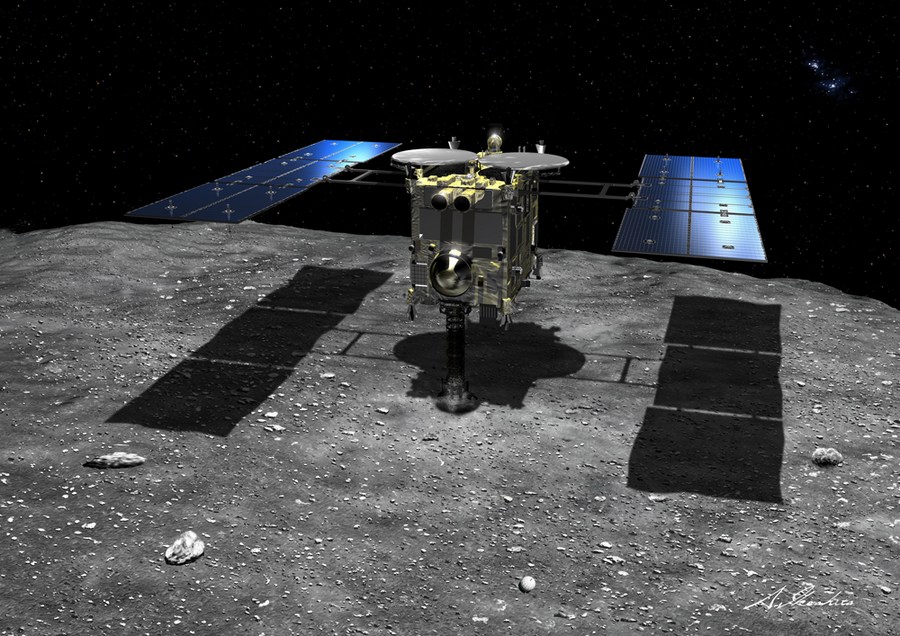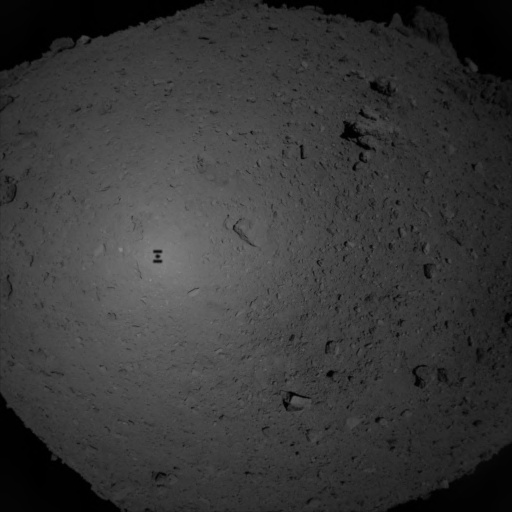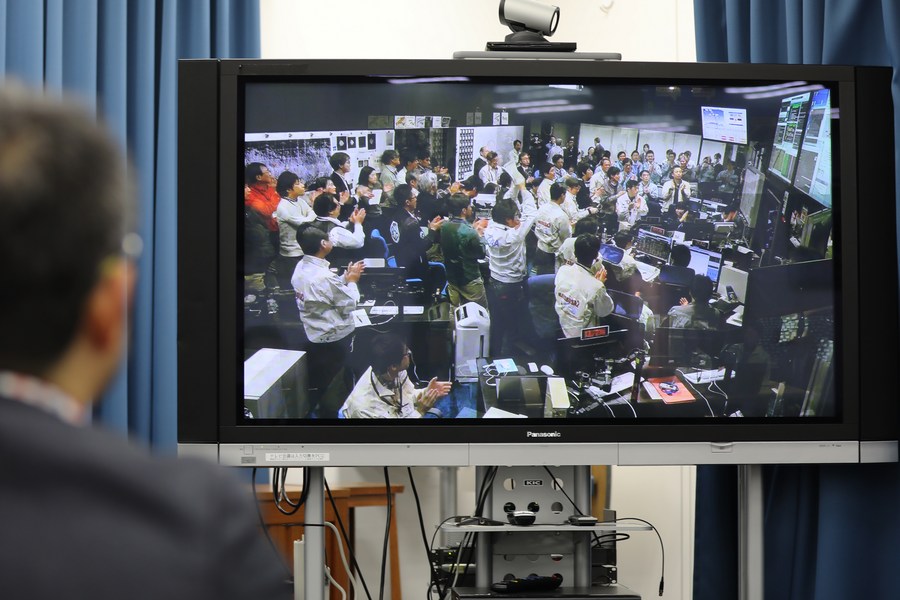
File photo: Simulated picture shows Hayabusa2 touching down on the asteroid Ryugu. (Xinhua/JAXA)
Researchers from the Japan Aerospace Exploration Agency (JAXA) said the gas contained in the storage unit of Hayabusa2 space probe was from the Ryugu asteroid and this is the first time that a sample of gas has been delivered from space to the Earth.
TOKYO, Dec. 16 (Xinhua) -- Japan's space agency said Tuesday the Hayabusa2 space probe mission has been a perfect success and the goal of bringing back samples from a distant asteroid has been achieved, including the first samples of gas from space.
Speaking at an online news conference on Tuesday, researchers from the Japan Aerospace Exploration Agency (JAXA) said that a number of blackish, sandy particles have been observed inside a storage device from the capsule that landed in an Australian desert on Dec. 6.
They said the particles are believed to have been collected during the probe's first touchdown on the Ryugu asteroid.
The researchers also said the gas contained in the storage unit was from the asteroid and this is the first time that a sample of gas has been delivered from space to the Earth.
JAXA project manager Tsuda Yuichi said it was a dream come true, "We now have asteroid particles from outside the Earth's atmosphere, something we've long dreamed of."
The Hayabusa2 space probe, launched in December 2014 arrived above the asteroid in June 2018.

File Photo: Photo taken by Hayabusa2 shows the scene of Ryugu asteroid after the space probe landed and collected samples from Ryugu's surface. (Xinhua/JAXA)
In the February following, Hayabusa2 successfully made its first landing on Ryugu and collected rock samples, JAXA said at the time.
The initial touchdown on the asteroid had to be postponed for a while as JAXA found the surface of the asteroid, which at the time was about 300 million km from Earth and 900 meters in diameter, to be rockier than it first thought and needed more time to ensure the safe landing of the probe.
The agency, however, was able to locate a flat area near Ryugu's equator that was free of rocks larger than 60 cm.
The scientists, according to JAXA, successfully landed the probe on a far smaller landing area than originally planned.
The initial landing zone near the equator was just six meters in diameter, JAXA said.
During its mission Hayabusa2, prior to its touchdown on the asteroid, released a small-sized Mobile Asteroid Surface Scout, also known as MASCOT, jointly developed by the German and French space agencies, which touched down successfully on the asteroid.
Two small robotic rovers were also launched from Hayabusa2 and successfully landed on Ryugu, JAXA confirmed.
The rovers took images of the asteroid and performed other functions such as measuring its surface temperature.

A man watches live video in Japan Aerospace Exploration Agency (JAXA), Tokyo, on Feb. 22, 2019. (Xinhua/Du Xiaoyi)
JAXA said the images of Ryugu captured by the robots initially revealed a cluster of bumpy rocks and a lack of flat surfaces for the main probe to land on.
The 600-kg Hayabusa2, which was launched from the Tanegashima Space Center in southwestern Japan in December 2014, experienced no major problems throughout its journey totaling 3.2 billion kilometers.
The agency said that in total, Hayabusa2 was scheduled to make three landings on the asteroid and collect soil, rock and gas samples and would stay close to Ryugu for one and a half years.
Hayabusa2 returning to earth and the capsule possibly containing samples of soil, rocks and gas it has collected from Ryugu now sees its mission completed.
The samples collected are thought to contain water and other materials that could possibly support life, JAXA has said. ■



